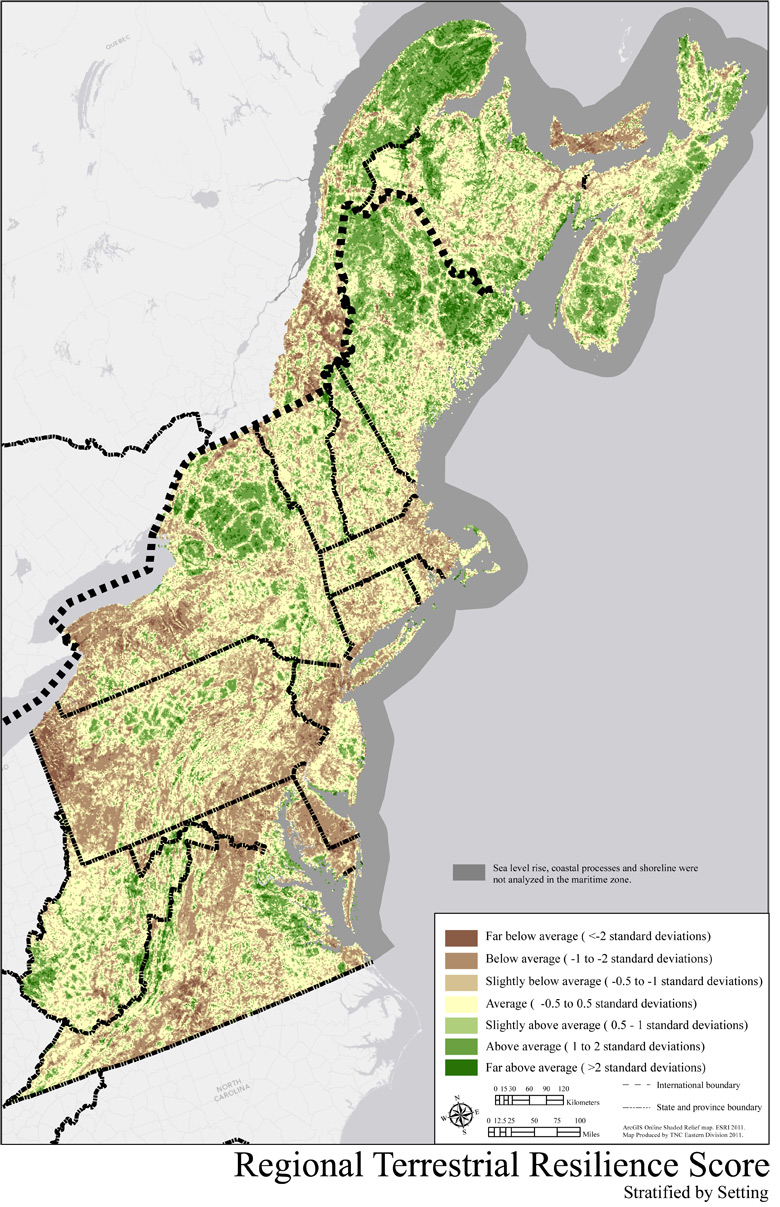
Like much of the environmental community, we have come to accept that climate change is emerging as the greatest challenge to effective wildlife conservation. As a funder with a long history of supporting private land conservation and the continuing desire to continue to provide capital for the permanent protection of wildlife habitat in the United States, we face with this fundamental question: "Are we conserving the right places based on the changes we anticipate from climate change?" We have learned that such an inquiry is complicated by the fact that it is difficult to predict with certainty how quickly climate change will occur, how it will manifest itself in specific locations, and how it will affect thousands of species, not only in the short term (i.e., the next few decades), but on timescales that are relevant to processes such as species' evolution (i.e., centuries and millennia). Moreover, even when a strong climate-based habitat conservation plan is available, tough questions remain about how to prioritize among the places identified as high-value habitat and then how to best allocate scarce capital to available conservation transactions.
The multiple layers of uncertainty surrounding the timing and impacts of climate change are causing many experts in the conservation field to re-examine longstanding wildlife conservation targets and strategies. For instance, in contrast to conservation efforts that have traditionally focused on maintaining existing ecological conditions -- or even restoring conditions to some historical ideal -- there is a growing recognition in the field of a need to shift away from a static view of the environment and acknowledge that conditions are changing rapidly. Because of the potential inability of a number of species to adapt to the pace and severity of climate change, a number of experts also see the need to shift away from an exclusively species-based approach of setting conservation priorities, such as species vulnerability assessments. We subscribe to this view and have engaged with conservation scientists and practitioners over the last few years to identify and develop alternative approaches that can complement a focus on species.
Among the alternatives that are now available to incorporate climate change considerations into habitat conservation planning (see www.databasin.org/yale), we are learning that planners can focus on identifying sites that will remain resilient in the face of climate change. Resilient sites are natural places predicted to withstand the growing impact of climate change and offer refuge to a diverse array of plants and animals. Resilient sites exhibit two key attributes: (1) landscape features that create varied ecological conditions, such as microclimates, that produce and support a wide variety of species; and (2) a high level of physical connectivity that allows species to move to more hospitable locations as the climate changes.
New approaches are emerging to enable habitat conservation planners to identify key sites that exhibit climate change resilience. Because species distributions are tightly correlated with physical characteristics of the land, especially geology and elevation, conserving a broad variety of geophysical settings, such as limestone valleys and silt floodplains, could offer a robust and efficient approach to protecting biodiversity under future climate scenarios. By mapping geophysical settings across ecoregions and evaluating sites within them for resilience characteristics (landscape complexity and connectivity), scientists can identify critical resilient places -- those that will conserve the full spectrum of settings where biodiversity, writ large, can flourish and evolution can play out.
Development of methodologies that combine a focus on geophysical settings with resilience factors has taken place and continues within The Nature Conservancy (TNC), supported in part by grants made by the Doris Duke Charitable Foundation's Environment Program. For instance, TNC applied these methodologies in the 13 states that make up the Northeast/Mid-Atlantic region of the U.S. to identify sites resilient to climate change. We recently awarded grants totalling more than $12 million to the Open Space Conservancy to support habitat conservation planning, prioritization, and acquisition activities that will be informed by TNC's resilience analysis.
We are excited about the prospect of resilience science serving as an important complement to species-focused conservation assessments. We are also eager to see how this kind of analysis can inform and refine land conservation priorities in the geographies where it has been completed to date. Once we've learned more, we'll be sure to report back.